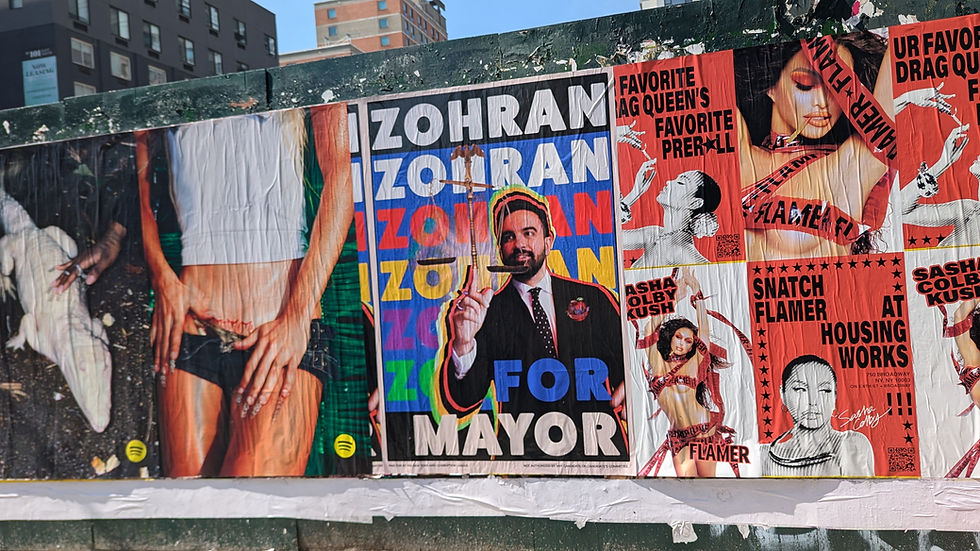Peru And Its Endless Political Succession
- Victor Elizondo

- 2 days ago
- 4 min read

When it comes to political crises in Latin America, Peru is always on everyone's lips. The country suffered yet another political earthquake early last month, ending the presidency of Dina Boluarte. The now former president, like her immediate and myriad other predecessors, was removed by Congress after a brief stint. Peru has had eight presidents in the last ten years, with Ollanta Humala (2011-2016) being the last to complete his term. Since then, instability has gone from bad to worse, with extreme examples such as Manuel Merino's five-day presidency in 2020 and Pedro Castillo's attempted self-coup in 2022.
José Jerí is the latest to pick up the gauntlet, with no guarantees that his term will last until 2026, when the next presidential elections are held. Political uncertainty is as widespread as citizen discontent. This imbroglio raises a number of serious questions: Is Peru an isolated case of political crisis in the region, or does its unrest simply stand out among other Latin American countries? Does the Peruvian Congress wield too much power, or, conversely, should the presidency be strengthened? And most importantly, despite the particularities of each political system in the region: Is the Peruvian case sufficient proof to argue that the presidential model in Latin America is destined to fail?
The Peruvian case also reveals the cracks caused by a fragmented political system, with an excessive number of parties that hinders the formation of stable and functional majorities. In Peru, each new president arrives with an improvised political movement lacking a solid base and a lasting national project. The absence of consolidated parties generates ephemeral governments, unstable alliances, and a constant struggle between Congress and the Executive. This dynamic translates into a vicious cycle where governability becomes almost impossible and democratic representation is emptied of meaning.
Populist rhetoric, from both the left and the right, takes advantage of this institutional chaos. They present themselves as alternatives capable of rebuilding the country or restoring order, but they end up deepening the crisis. Pedro Castillo, for example, came to power promising to represent the “forgotten people,” but his government ended up mired in scandals, confrontations, and a clumsy attempt to perpetuate himself through a self-coup. Dina Boluarte, for her part, promised stability, but her administration was quickly consumed by protests, repression, and a lack of legitimacy. In this context, citizen dissatisfaction manifests itself in the streets with each change of president, reflecting a widespread exhaustion with a system that seems incapable of offering certainty or progress.
There will likely be no clear picture of Peruvian politics until the 2026 elections approach. The composition of the next Congress will be decisive in determining the country's institutional stability and the length of the next president's term. I would like to think there is still hope for the Peruvian political system, but recent history makes it difficult to maintain that optimism. The absence of strong leadership and a truly reformist political project makes it impossible to envision a way out of this mess. It's not just about changing presidents, but about transforming a system that, in its current form, fosters confrontation and paralysis, ultimately creating and perpetuating a perfect storm in politics.
However, this phenomenon should not be interpreted solely as a Peruvian problem. Instability in Peru is, in many ways, a reflection of the ills plaguing presidential democracies in Latin America. From the hyper-concentration of power in some countries, such as Mexico or El Salvador, to the chronic weakness of the presidential figure in others, such as Peru, Latin American presidentialism reveals its dual nature. In both extremes, the consequences are the same: institutional erosion.
Presidentialism, originally conceived as a balanced system of checks and balances, has ultimately stifled many democracies in the region. In some cases, it has fostered the rise of authoritarian leaders; in others, it has led to constant governance crises. The rigidity of the system, which prevents fluid coexistence between the executive and legislative branches, and the absence of strong political parties have left many countries trapped in a seemingly endless cycle of instability.
Peru has become the clearest example of this erosion. Each change of president is no longer perceived as a democratic transition, but rather as a routine act within a collapsed system. Its political system has lost its capacity to respond to social demands. Unless there is a comprehensive reform that rethinks the relationship between Congress and the Presidency, as well as a reconstruction of the party system, the country will remain trapped in a cycle of crisis and disillusionment.
In light of all this, it is legitimate to ask whether presidentialism, as we have known it in Latin America, remains a viable form of government. Perhaps the problem is not solely one of leadership, but of structure. The Peruvian experience demonstrates that when institutions weaken and parties fragment, presidentialism becomes a minefield. Far from strengthening democracy, it ends up suffocating it.
Image: Flickr/MINISTERIO DE DEFENSA DEL PERÚ
No image changes made.
.png)



Comments